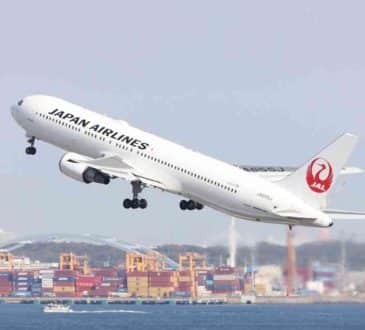Keep your Employees Happy: Employee Engagement & Experience

Key Principles for CEOs: CEOs are constantly looking for ways to improve employee engagement and experiences. They want to see their people engaging with their work, both in the short term and long term. Here’s a look at some of the most common engagement principles for CEOs, and how they can be applied.
To create an environment where employees feel engaged and appreciated, it’s important that CEO’s build and enable a strong and supportive team, focus on employee satisfaction, be responsive to employee needs, and reward people for their success. It’s also critical to create a culture that encourages innovation, diversity, agility, and flexibility. By following these principles, you can ensure that your employees remain content and productive.
How to Improve Employee Experiences?
Most of us are familiar with employee engagement. Most of us also know that employees need to feel connected to the organization, connected with the individual team members, and connected with their jobs. Employee engagement describes the percentage of the employees who are emotionally committed to the organization and committed to the success of the organization. When workplace engagement is high, employees are focused and engaged in their jobs, supporting the organization’s mission, and showing dedication to the organization’s goals and values. In Gallup’s State of the Global Workplace 2021 Report, it found replacing exiting workers costing one-half to two times the employee’s annual salary. Assuming an average salary of $50,000 that replacement cost translates to between $25,000 and $100,000 per employee. CEO’s need to:
- Ensure that the company’s culture is good enough for employees to remain engaged, want to bring their ‘A’ game every day and see results.
- Make sure that the company provides a challenging environment where employees can show their best qualities.
- Keep an eye on employee performance reviews to make sure that you’re providing what your employees need and want.
Keeping employees at the heart and centre of everything you do will ensure you deliver the best employee experiences and in turn build a strong connection between the organization and its employees that will continue to deliver results. Follow the below principles to ensure you build a world class and high performing organization:
- Empower your leaders
Ensure your people leaders understand that creating amazing employee experiences is central to the success of the organization. Work diligently with them to ensure that all staff have a positive experience that drives their passion for work and helps them grow and learn. People leaders need to focus on creating engaging and compelling workplace cultures, so that every employee feels valued and appreciated. Leaders need to ensure they create a safe place where employees can be themselves and express their opinions, ideas, and feelings without fear of retaliation or retribution. Ensure they are providing everyone with the tools they need to succeed, from career development resources to comfortable working conditions. - Improve employee productivity
Most businesses try to improve employee productivity to increase the company’s bottom line. However, the focus should be on improving employee experiences and engagement and in return overall organization productivity will improve. To start with, make sure your people have enough information and tools to do their jobs effectively. Additionally, it is important to provide a fun work environment for employees and keep them engaged throughout their workday especially in hybrid environments. Many organizations suffer from complex operations that can easily create more work friction. To increase employee productivity, implement processes and procedures that support efficient workflows between team members and different departments. By learning from new and innovative companies you can develop processes that are efficient and easy for your people to understand and follow. Furthermore, ensure employees feel incentivized to produce high-quality work outputs. - Improve employee team performance
Create a team environment where everyone can work together productively. This means providing a supportive and encouraging work environment, as well as promoting team and trust-based building activities. Provide incentives and rewards that motivate employees to improve their performance. Leaders need to think of innovative ways to reward and incentivize their people. To achieve optimal team engagement, it’s also important to provide effective coaching and training for all team members. - Foster employee loyalty
Loyalty is key to creating a positive work environment. Satisfaction is the key factor that determines whether employees feel fulfilled, appreciated, and loyal. To increase employee satisfaction, make sure your company culture and workplace are conducive to a positive work environment that values employee happiness. Loyalty also helps you attract the best talent to your company. - Encourage employee creativity & provide opportunities for innovation
Creativity is another important factor in a happy work environment. People who are encouraged to think outside the box can often come up with innovative ideas that improve your business. Provide opportunities for employees to work together on personal challenges and projects that build a growth mindset, team cohesion, and improve collaboration. Employees need opportunities for innovation to grow and progress as individuals. - Minimize work friction & be prepared for volatility
Work friction is often the root of all problems in an organization, so it’s important to try and reduce it as much as possible. This means setting boundaries and enforcing rules gently but firmly. It can also mean providing opportunities for employees’ flexibility within the workplace, as well as proactively offering development and coaching. Employee engagement can be impacted by volatility which is inevitable in today’s world. Therefore, ensure you are prepared for volatile market conditions, thereby minimizing the impact to employee engagement.
Here are 5 ways to stay ahead of volatility:
a) understand what volatility is and why it occurs;
b) understand how to react when things don’t go as expected;
c) have a plan for unexpected incidents;
d) create resilient team members;
e) manage risk by regularly assessing the state of your business and adjusting your plans accordingly. - Build a Continuous Learning and Improvement Environment
The goal of employee engagement is to develop your people who are committed and excited to work. To do this, employers must foster a growth mindset in their employees. This means that they should be constantly learning and growing, which will enable them to adapt and improve their skills in the workplace. Encourage teambuilding and communication exercises that help people connect with one another and provide employees the tools they need to be productive members of the team.For employees to be lifelong learners, employers must enable transformations that keep them constantly adapting so that they can remain proficient in the workplace. This includes providing them with new technologies, tools, or processes that facilitate continuous learning.
A company’s success depends on how engaged their people are. By implementing principles of best practice, improving employee motivation, and developing amazing work culture, you can make your employees satisfied, engaged and productive. Continuous learning and improvement enable transformations to continuously adapt and improve the company’s performance while ensuring employee loyalty drives high calibre talent and therefore high performing teams.
Written by Stuart Andrews.
Have you read?
These are the countries with the Highest Average Salaries, 2022.
International Financial Centers Ranking, 2022.
Information Management: Overestimated Concept And Underestimated Tool by Vangelis Kotselas.
Hyperautomation is Already Here, Bringing with it Hyperdisruption by Robb Wilson.
The Extraordinary Power of Front-Line Ideas by Dr. Alan G. Robinson and Dr. Dean M. Schroeder.
THE CHANGING FACE OF THE BUSINESS by Michelle Bowditch.
Add CEOWORLD magazine to your Google News feed.
Follow CEOWORLD magazine headlines on: Google News, LinkedIn, Twitter, and Facebook.
This report/news/ranking/statistics has been prepared only for general guidance on matters of interest and does not constitute professional advice. You should not act upon the information contained in this publication without obtaining specific professional advice. No representation or warranty (express or implied) is given as to the accuracy or completeness of the information contained in this publication, and, to the extent permitted by law, CEOWORLD magazine does not accept or assume any liability, responsibility or duty of care for any consequences of you or anyone else acting, or refraining to act, in reliance on the information contained in this publication or for any decision based on it.
Copyright 2024 The CEOWORLD magazine. All rights reserved. This material (and any extract from it) must not be copied, redistributed or placed on any website, without CEOWORLD magazine' prior written consent. For media queries, please contact: info@ceoworld.biz
SUBSCRIBE NEWSLETTER








